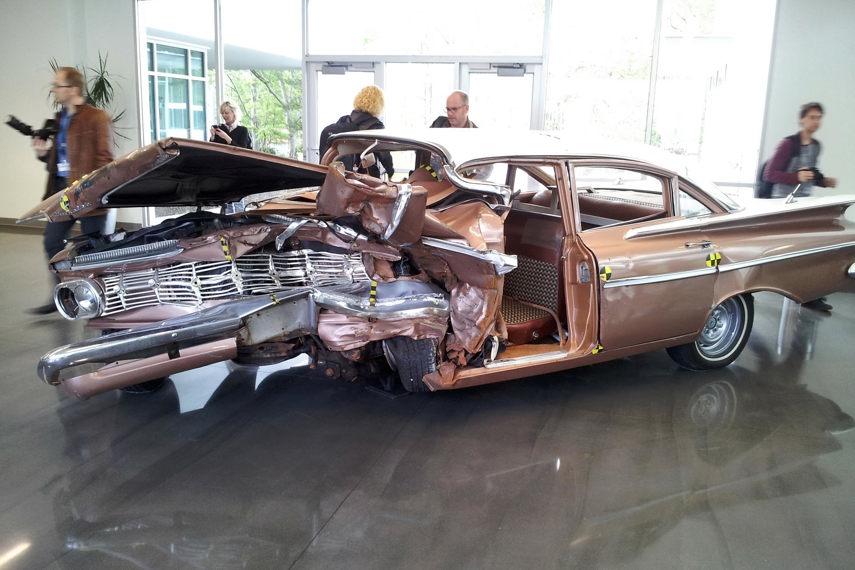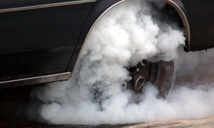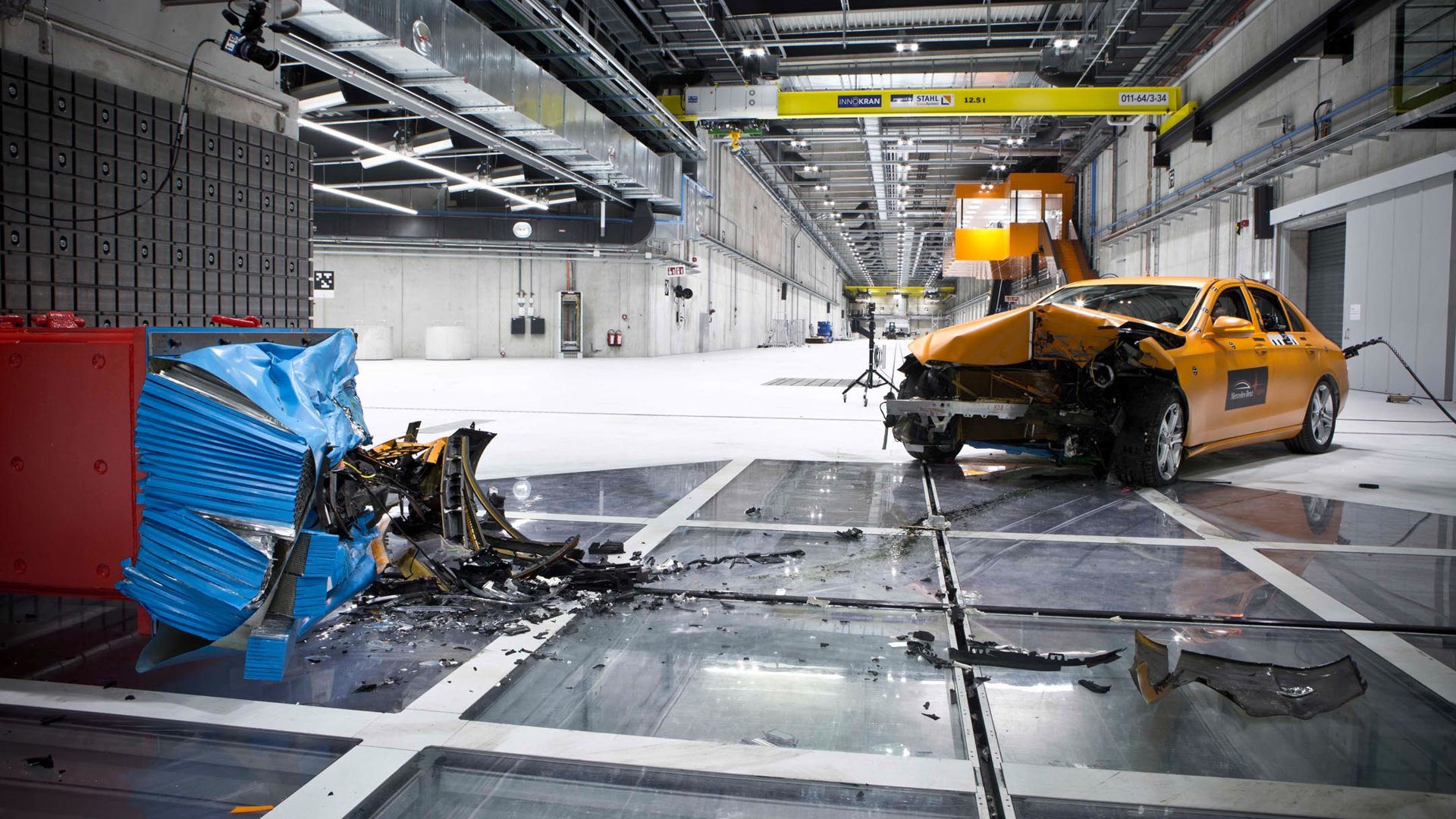Being in a car collision is right up there with many people’s greatest fears and worst nightmares. Thankfully, over the past 100 years, car safety has improved exponentially and continuously. The automotive industry is one of the most regulated industries in the U.S. alone, only second to petroleum and electric power, according to the RegData’s Industry Regulation Index.
So how likely are you to get into a deadly car collision? According to the National Safety Council, it’s about one in 107 people. You’re less likely to get into an accident if you ride a bicycle or motorcycle. The only things more fatal than fatal automotive collisions are heart disease and cancer.
In ascending order, here are the leading contributing factors in deadly car collisions and how you can try to avoid them.
Sleeping at the Wheel

Statistically, one in three drivers has fallen asleep at the wheel, according to ThinkInsure. Thankfully, some modern cars have built-in technology to help monitor driver drowsiness, including tracking a driver’s eyes and their steering patterns. Unfortunately, not all cars have these features, so driver drowsiness and falling asleep at the wheel are leading causes of fatal collisions.
When you’re sleepy at the wheel, it often impacts your reaction time, making it slower. You may lack focus, and your vision and depth perception may become blurry or sensitive. Tired drivers will have trouble keeping a car centred in a lane. This is similar to the effects of being under the influence, which is what makes it so dangerous.
There aren’t any laws that make it illegal to drive drowsy, but if you get into a collision because of falling asleep, it can be considered reckless driving, which has some pretty severe consequences.
How can you avoid falling asleep at the wheel? Knowing the early signs of sleepiness is vital since not everyone has the same symptoms. For some, the telltale sign is restlessness or crankiness, and for others, it is yawning and eye rubbing.
In the short term, you can drink coffee, crank up the music, or open the windows to help stay awake. But more importantly, start planning your next stop so you can take a rest, be it a truck stop, next exit, or even on the side of the road. A 30-minute nap could very well save your life and keep others safe as well.
Vehicle Factor

For sci-fi fans, it’s fathomable that a machine with artificial intelligence could be destructive and even deadly, like Skynet in Terminator or HAL 9000 in 2001: A Space Odyssey. Until we have fully autonomous cars, this isn’t something we need to worry about … yet.
In the case of crashes caused by mechanical or electrical issues, there are genuine dangers, however. In this case, there may be a fault with your car that causes a fatal collision.
Common ways a vehicle might cause a collision are steering failure, brake failure, or tire failure, leading to loss of control and a severe crash.
Although the airbags in your car are specifically designed for safety, they have also caused fatalities in the past. Issues with airbags can span from not deploying during a collision, deploying when they shouldn’t, and deploying with too much force or too quickly. If a seatbelt unbuckles in the event of a crash, it could also be fatal.
What could solve this? Each year, car manufacturers recall millions of cars with manufacturing defects or faulty parts. Legally, manufacturers have to contact the car owner and publicly post the recall. Many automakers allow you to search your car’s VIN to check if there are any active recalls or known safety issues. If there is, be sure to get it taken care of immediately.
In general, get your car checked regularly to ensure all the essential functions are working correctly. Making sure your car is running in tip-top condition means it’s also in the safest condition.
Under the Influence

Alcohol or drug-impaired driving is still one of the leading causes of death on Ontario roads. It’s unfortunate because it’s one of the leading causes of traffic fatalities that has one of the easiest solutions: Just don’t drive.
The danger with drinking and driving is that the effects of alcohol aren’t always immediate, making you feel invincible, overconfident, and still fully capable of driving. It can take about 30 minutes to two hours for alcohol to be absorbed into your bloodstream.
You’re considered impaired when driving if you’re over the legal limit of alcohol, 80 milligrams of alcohol in 100 milliliters of blood (0.08), or have consumed drugs like cannabis. Although it is legal to buy and use, driving with any cannabis in your system is illegal.
The risk of driving under the influence is that it can slow your cognitive skills and breathing, which makes you slower at reacting. There’s a high chance you won’t be able to respond to situations in time or may overcompensate, which can be just as deadly.
The penalty for drunk driving depends on how intoxicated you are, whether in a commercial or personal vehicle, and if you’re a young or novice driver. You immediately get a three-day licence suspension for your first offence and face a fine and penalty.
Driving under the influence so risky because you can harm yourself and others. If you want to indulge, find another way to get there and to get home. Instead of driving, use a ride-sharing service or call a friend to pick you up. Just as importantly, look out for your friends and call them a cab or offer them a place to stay until they sober up if they’ve been drinking.
You Won’t See It Coming

There’s a saying, “Life is what happens to you while you’re busy making other plans.” We all want to be in control of our own destiny, but sometimes life doesn’t cooperate. Accidents can happen that are completely out of our control.
In terms of fatal automotive collisions, a lot can happen while you’re driving that seems totally random like something falling off the back of a truck, a tornado touching down, or maybe another driver swerving into your lane. Although this isn’t the most common cause of vehicle-related collisions, it’s not impossible.
Is there anything you can do? When operating any vehicle, it helps to stay hyper-vigilant. Although you can’t control what happens to you, your best bet is to be ready to react when things do. See a truck where its cargo doesn’t seem properly secured or maybe there’s a driver being erratic? Don’t get too close.
Distracted While Driving

Staying focused on the important task of driving takes a lot of effort. Everything wants our attention these days, and with connected cars, we are more connected than ever.
Despite abundant and cost-effective hands-free technology and increasingly strict penalties for distracted driving, the number of people succumbing to those distractions is shocking. There’s a lot of distracted driving activity out there: people doing personal hygiene, reading a book, playing a video game, dealing with rowdy passengers, taking a selfie, or simply texting or scrolling through Instagram.
One of the reasons being distracted is so dangerous is because it impacts your ability to react to situations. According to the Technology Associates Engineering Experts, after you become aware of a hazardous condition, the time between perceiving the danger and reacting is between 0.7 and 1.5 seconds.
Consider the difference that one second could make if your hands are already on the steering wheel, rather than having to move them there. Also, if you’re looking at your phone, you’re not looking at the road where there are one-tonne projectiles moving all around you. Every second counts in an emergency.
If you’re caught driving while distracted, the penalty in Ontario is three demerit points, a fine, and a driving suspension.
As the age-old saying goes, it’s better to arrive alive than not at all. If you really need to do something other than driving, find a parking lot or at the very least park safely on the side of the road.
Driving Too Fast

The most common contributing factor to fatal collisions is related to speed. Although driving fast can be a lot of fun when things go well, the faster you go, the higher the risk of it going terribly wrong.
For every one per cent increase in speed, a driver’s chance of an accident increases by two per cent, the possibility of severe injury increases by three per cent, and the likelihood of a fatality increases by about four per cent, according to a study by the University of California at Berkley.
Driving quickly also increases how much time it takes your car to stop. If your vehicle is going 50 km/h, it will usually take 10 metres of braking to come to a complete stop. According to Motorama, if you increase that speed to 100 km/h, it will take around 40 metres to come to a complete stop.
If you risk driving over the speed limit, the penalty of demerit points increases with how fast you’re going over the limit. These points directly impact the cost of car insurance, and if you collect 15+, your licence will be suspended.
With speed being the most significant contributing factor in fatal car collisions, the best thing you can do is drive within your comfort zone and by following legally posted limits. There are plenty of ways you can drive fast and have fun. Consider going go-karting, signing up for a local autocross event, and even booking a race session at a local track.

